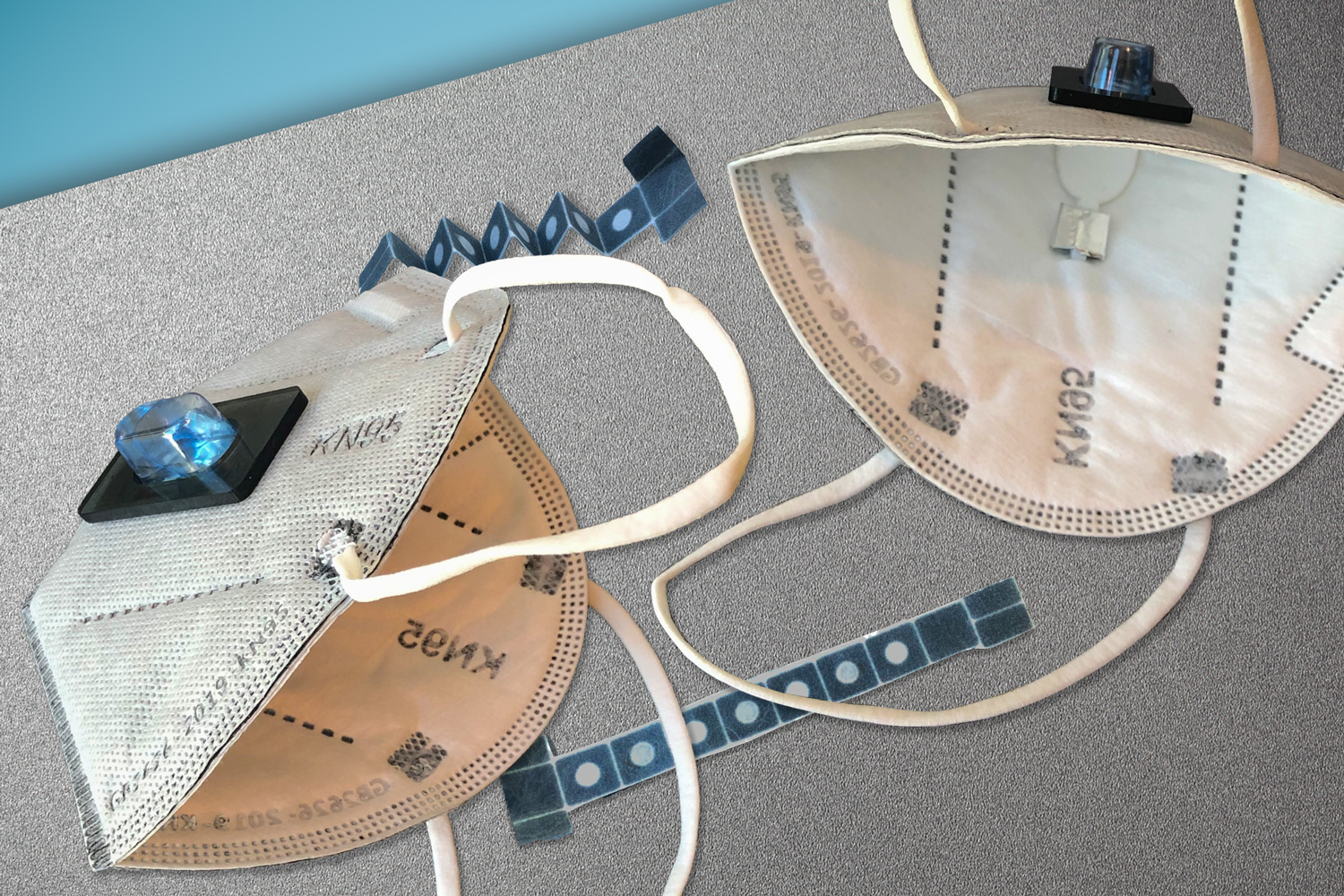Two of the most important public health messages during the COVID-19 pandemic are to wear a mask around people and to get the COVID-19 test if you feel unwell. An innovation developed by Harvard and MIT researchers combines the two techniques for preventing the spread of respiratory disease. Harvard and MIT researchers have created face masks that test your breath for the coronavirus.
They invented a wearable biosensor. It can perform the functions of a whole laboratory while being tiny enough to be attached to a face mask. Wearers breathe into their masks for 15 to 30 minutes. Then push a button on the sensor. Then, their COVID test results appear on a readout strip similar to a pregnancy test after another 90 minutes. Nature Biotechnology has published the working methodology of the mask.
“For every single person that has this diagnostic face mask, not only are you preventing the virus from spreading, you’re actually pinpointing whether or not they have it relatively rapidly,” said co-first author Peter Nguyen, a research scientist at Harvard’s Wyss Institute.
This method could test any pathogen

Jim Collins, a Wyss Core Faculty member, and senior author invented the wearable freeze-dried cell-free (wFDCF) technology. It is a part of the sensor. The molecular machinery, that cells employ to recognize genetic material like DNA and RNA, was isolated and freeze-dried to make the sensor.
According to co-first author Luis Soenksen, a postdoctoral fellow at the Wyss Institute, this information works as a “fingerprint” for the sensor to identify the virus. With the touch of a button, the sensor activates, releasing a little amount of water to rehydrate the freeze-dried components.
Another disease, such as influenza, might come across using the same method. The detection is so accurate. It can even distinguish across COVID-19 variations. It likewise can go down to individual DNA building blocks.
Furthermore, the diagnostic system may be a part directly into the fabric, obviating the need for a sensor. According to Soenksen, the technology may be useful in a variety of applications. It can be ranging from military suits that detect dangerous chemical agents to lab coats that screen for drug-resistant germs.
The future face masks could be able to help us prepare for the next pandemic

Many hurdles to real-time testing might be removed if a diagnostic device could be included in a face mask. The testing sensitivity is similar to gold-standard RT-PCR tests, according to the researchers, and it produces findings rapidly. The device is also inexpensive. The prototype costs five dollars to produce without packaging, and then the finished version could be for even less.
The team is currently searching for commercial partners to assist with the production of the sensor. So don’t expect to see it on store shelves anytime soon. Even if face masks with built-in virus sensors aren’t accessible during the current pandemic, they could be able to assist prevent the next one if we know what pathogen to search for.






